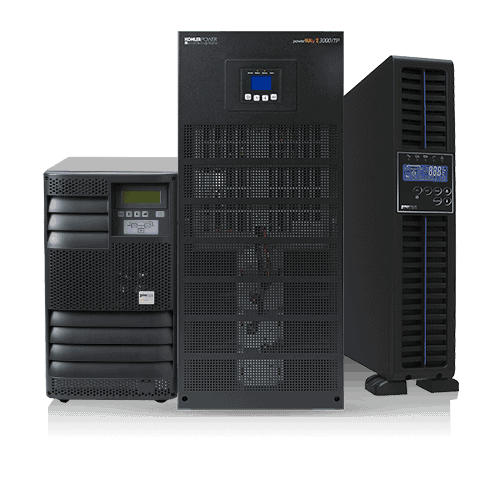In this article Ian Watts, Emergency Lighting expert KOHLER Uninterruptible Power explains the main benefits of centrally powered emergency lighting systems.
The key benefit is that the output of a central emergency lighting system can be controlled from a single location – which will assist the user/facilities manager greatly, as explained in the following points:
- When the occupants leave a building the central battery power system can be ‘inhibited from operation’ preventing unwanted usage of the battery if the power supply fails when the premises are empty. This ensures the battery remains fully charged for when people come to re-enter the building (the emergency power system control switch should be engaged to operate with an essential service).
- This control can also be used to switch off maintained luminaires such as exit signs etc. and is commonly used in applications of central emergency lighting systems such as cinemas and theatres.
- If the emergency power system is providing safety as well as emergency escape lighting total or partial inhibition can be used under management manual control to preserve battery capacity for use as escape lighting. Partial load switching allows the output to be switched from areas that do not need it for example when they have been cleared of occupants and the battery capacity saved can be used to extend the duration of essential locations.
- By inspecting or measuring the battery voltage during discharge a reasonably accurate estimation can be made of the duration left in the system for emergency lighting.
These central control features are not normally feasible with self-contained power supply systems.
It is suggested that the procedures for central system inhibition need to be checked and it may be by operation of the low voltage battery disconnection device, or by inhibiting the emergency lighting inverter circuit.
If you would like to know more about centrally powered emergency lighting systems and to find out more advantages, please contact us on [email protected] .
Author:
Ian Watts was co-opted onto the committee responsible for the drafting of BS.5266 part 1 in 2015, as the independent industry expert on new UPS emergency lighting technology. As Business Development Manager for KOHLER Uninterruptible Power he has contributed to the drafting of BS.7273 part 6, a draft standard currently out for public comment to look at fire interface devices including the integration of dynamic emergency lighting systems. Sitting on the CEN 169 working group 3, tasked with this same development provides him with a European insight into this exciting market. He lectures for CIBSE and has been a trainer for the FIA since 2012.





